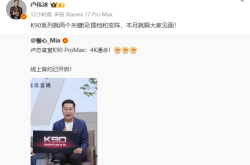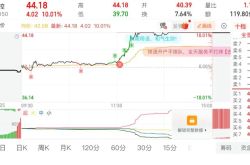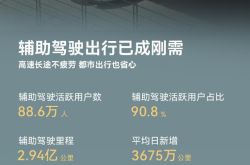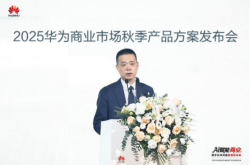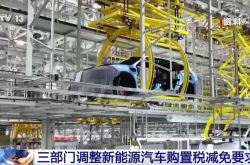Comprehensively Benchmarking Apple: Lei Jun's Sense of Inferiority and Confidence
![]() 09/28 2025
09/28 2025
![]() 469
469
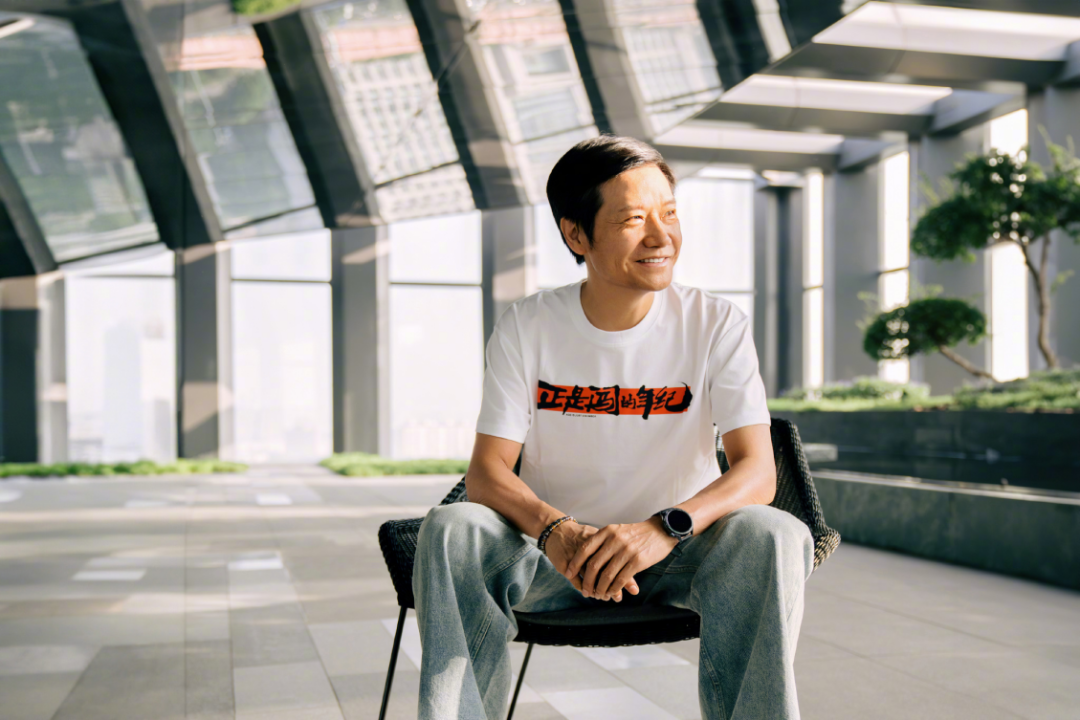
Did This Renaming Really "Score Big"?
Written by / Meng Huiyuan
Edited by / Li Wenjie
Layout by / Annalee
"Everyone understands why we named it Xiaomi 17—it's just that powerful. Of course, some netizens suggested we call it Xiaomi 18. We decided to keep it simple," remarked Lei Jun.
Prior to Lei Jun's sixth annual speech, the decision to skip the '16' and name Xiaomi's latest flagship phone '17' had already sparked considerable debate. At that time, everyone was curious about how Lei Jun, widely hailed as the "most marketing-savvy product manager," would handle public sentiment this time around.
Unexpectedly, on the evening of September 25th, Lei Jun's response was to "stand firm," using a detailed comparison of specifications and user experiences to address doubts about the new product's naming.
Xiaomi fans hailed this move, believing it showcased Xiaomi's confidence and strength in confronting doubts head-on with facts. Opponents, however, remained unswayed, arguing that Xiaomi's approach was overly "opportunistic"—insisting it should have been named '16' instead of '17', calling it somewhat tacky...
The ultimate market response served as the yardstick for evaluating all benchmarking efforts: On September 27th at 10 a.m., the Xiaomi 17 series went on sale across all channels, immediately breaking the 2025 record for initial sales of domestic smartphones. Among them, the Xiaomi 17 Pro Max, heavily promoted by Lei Jun, set a new record for the highest initial sales volume and revenue across all price segments for domestic smartphones in a single day. It accounted for over 50% of the sales in the Xiaomi 17 series.
It appears that once again, Lei Jun and Xiaomi have "scored big."
Do True Leaders Shun Benchmarking?
Rewinding to just over ten days ago, when Lu Weibing posted on Weibo on September 15th, "Xiaomi 17 series, coming this month," the earlier hype and discussions about "Xiaomi 16" abruptly ceased, as if they had all turned into a silent farce.
A flurry of speculations, conjectures, and even malicious slanders flooded the internet: Some claimed, "Changing the name can only target the low-end market," believing Xiaomi's move was self-degrading. Others lamented, "True Xiaomi fans are really saddened by this name. Personally, I feel it shows a lack of persistence and confidence," questioning Xiaomi's brand image. Still others criticized, "My first impression is a lack of confidence rather than more confidence. I suggest changing it to 26 for a complete transcendence (surpassing)," offering sharp criticism of Xiaomi's naming strategy...
Considering the psychology of these users, they believed that skipping '16' and naming the new product 'Xiaomi 17' was a denial of Xiaomi's own brand strength, as true industry leaders do not bother benchmarking against any brand. Constantly comparing oneself to others reveals a lack of confidence.
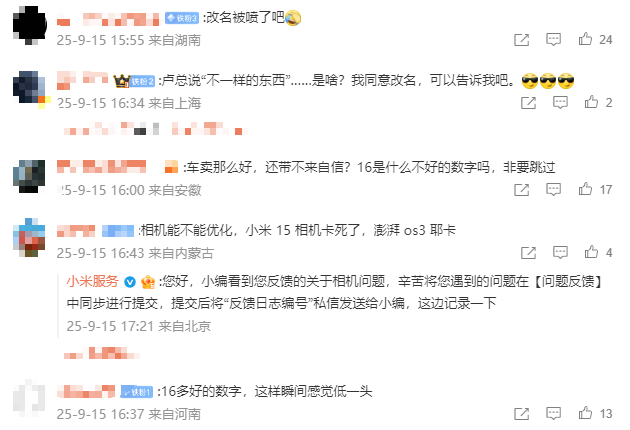
New Flagship Renaming Sparks Discontent Among Some Fans
This sentiment was particularly pronounced among some loyal fans who expected Xiaomi to lead the industry with a more composed and dominant attitude, rather than generating buzz through renaming. As one fan commented, "Initially, 8 was for the 8th anniversary, and now we're benchmarking again by changing it to 17. We've been benchmarking and chasing all our lives. Can't we just be ourselves? This skip is really hard to understand."
After the incident escalated, many analyzed Xiaomi's renaming strategy in-depth, extending it to its marketing strategy. Some media pointed out that while this move seemed bold and risky, it actually reflected Xiaomi's precise judgment of market trends and its own development.
In the fiercely competitive smartphone market, where brands are constantly seeking breakthroughs and innovations to attract consumers, Xiaomi's choice to release a new product in such a highly talked-about manner undoubtedly stood out among numerous brands, sparking widespread social discussions and achieving a unique marketing effect.
From a marketing perspective, this naming strategy successfully diverted consumers' attention from some conventional parameters of the product itself, guiding them to ponder the deeper meaning behind Xiaomi's move. It was equivalent to accumulating significant attention and hype for the new product before its release by creating suspense and buzz.
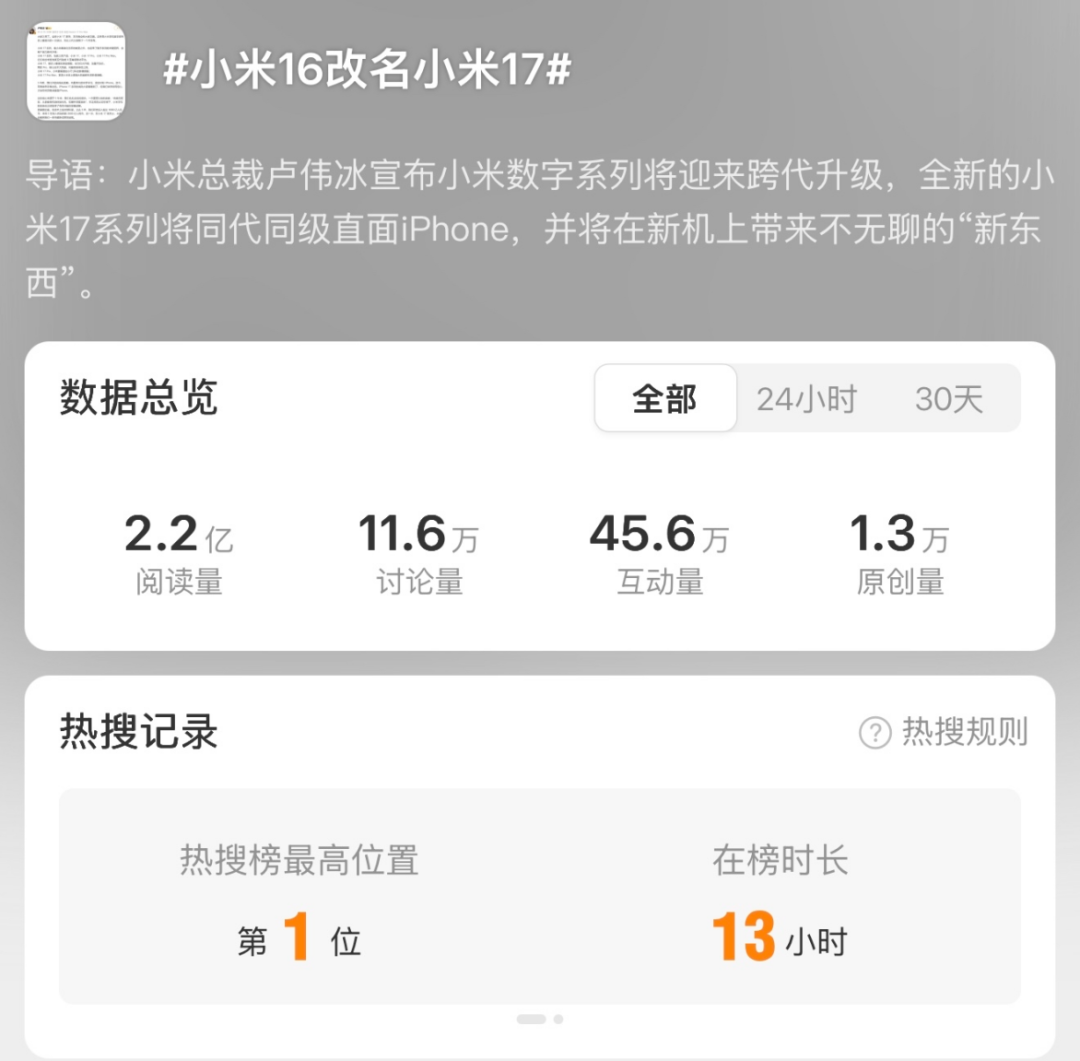
The Hype Generated by the Renaming Incident
When Lei Jun responded to doubts with a detailed comparison of specifications and experiences at the new product launch after his annual speech, the buzz and discussions finally materialized. The numerous advantages and features of the new product began to be presented to consumers in a highly impactful way.
Considering Lei Jun's previous marketing successes, whether with Xiaomi smartphones or Xiaomi cars, he has always accurately captured market trends and promoted products to the forefront of public attention with highly creative and buzzworthy approaches.
For instance, on October 31, 2024, the Xiaomi 15 series went on sale, and within less than 10 days, sales exceeded 1 million units. This achievement was inseparable from Xiaomi's previous promotion of product performance and leveraging the influence of the Xiaomi brand and its offline store network. On February 27, 2025, the launch of the Xiaomi SU7 Ultra saw over 10,000 orders placed within 2 hours, thanks to Xiaomi's marketing efforts, including promoting its Nürburgring Nordschleife lap time records, which garnered over 12 billion exposures on platforms like Douyin and Weibo.
However, this latest flagship smartphone launch, while seemingly following Xiaomi's usual marketing model, struck a nerve with many and even raised questions about Xiaomi's consistent emphasis on marketing.
After all, this naming approach and highly buzzworthy claims like "comprehensively benchmarking against Apple," while attracting attention in the short term, may, in the long run, solidify Xiaomi's brand perception as a "follower" rather than establishing an independent image as a tech leader. This could potentially have an adverse impact on Xiaomi's brand image.
The Confidence Behind 'Five Years of Sharpening a Sword'
During his annual summary, Lei Jun mentioned Xiaomi's journey to the high-end market, stating that when faced with various doubts, criticisms, and even attacks online, he found the breakthrough by "continuously investing in core underlying technologies and firmly transitioning from an internet company to a hardcore tech company."
Looking at Xiaomi today: In terms of sales, its smartphones have consistently ranked among the "top three globally," and its cars have made a splash from the start. In terms of brand heat (popularity), it remains consistently high. In terms of technological accumulation, it stands out among domestic smartphone brands. In terms of ecological layout, it has built a nearly unique global "human-car-home" ecosystem... It is clear that the path to the high-end market has been bumpy but determined.
So, is it even necessary to name the new flagship smartphone after the competitor's rhythm?
To many, such a controversial choice by a company with comprehensive strength and enormous development potential is indeed puzzling, leading to exclamations like, "At a time when confidence is most needed, they chose the most inferior approach."
However, from another perspective, perhaps Xiaomi and Lei Jun's move was not out of inferiority but rather confidence.
"Five years ago, we embarked on the premiumization of our smartphone business and officially started benchmarking against Apple. After five years of effort, we have made tremendous progress. The annual heavyweight new product, the Xiaomi 17 standard edition, is Xiaomi's strongest small-sized all-round flagship ever," Lei Jun said.
As Lei Jun stated, this time, Xiaomi is indeed speaking with data, benchmarking Apple from multiple angles such as battery life, imaging, appearance, system ecosystem, and price. It even took the recent comment that the iPhone 17 was "squeezing the toothpaste too hard" as a footnote for comparison, attempting to prove to consumers in a more comprehensive and direct manner that the Xiaomi 17 is not only on par with Apple but has achieved all-around superiority.
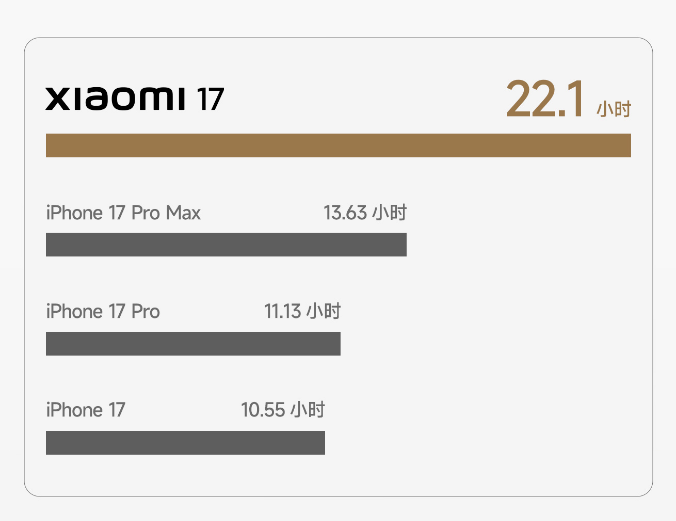
Benchmarking iPhone 17's Battery Life
A noteworthy premise is that Apple, as the benchmark in the high-end market, has long occupied the pinnacle of "innovation and quality" in consumers' minds. Although its product iterations have often been criticized as "squeezing the toothpaste," it still maintains extremely high profit margins and user loyalty thanks to its iOS ecosystem barriers and brand premium.
Therefore, Xiaomi's declaration of "comprehensive superiority" this time is essentially a carefully planned cognitive battle. By breaking down the comparison dimensions into quantifiable parameters, it transforms the originally vague brand image into specific technological advantages.
The cleverness of this strategy lies in its avoidance of direct confrontation with Apple in non-standardized soft power areas such as ecosystem loyalty and design aesthetics, while framing the discussion within the hardware parameter track where domestic smartphones excel.
However, the risks are equally evident: If consumers perceive a gap between the actual experience of the Xiaomi 17 and its promotion, and find that it still falls short of the iPhone 17 in certain aspects, the contrast between "leading in parameters but falling short in experience" could trigger a new round of public opinion storms.
In the high-end market, consumers pay not only for hardware costs but also for the trust premium in brand promises. Once this trust is broken, the cost of explanation will be far higher than in the mid-to-low-end market.
It's important to note that Xiaomi's new product launch came after the iPhone 17. Not only can Xiaomi conduct real device comparisons, but consumers can also experience it firsthand. This means that after the official release of the Xiaomi 17, every detail will be placed under a microscope for scrutiny. Any minor flaws could be infinitely magnified, affecting consumers' perception of Xiaomi's comprehensive superiority.
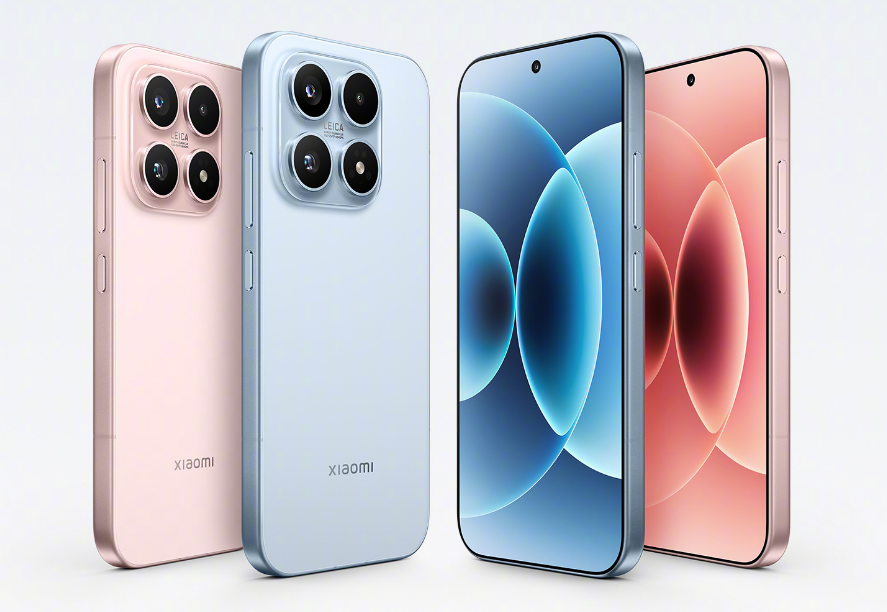
Xiaomi 17
Undoubtedly, Xiaomi's courage to initiate this cognitive battle at this time demonstrates its internal confidence in the strength of its new flagship. This confidence is not only reflected in the accumulation of technical parameters but also in Xiaomi's attempt to redefine consumers' expectations of "high-end smartphones" through these hard strengths.
From a broader perspective, Xiaomi's declaration of "comprehensive superiority" is not only a strategic attempt by the company itself but also a microcosm of Chinese tech brands seeking breakthroughs in the high-end market. In today's increasingly fierce global competition, Chinese brands need more "breakthrough makers" like Xiaomi to shatter the market barriers built by international giants through technological innovation and brand upgrading, winning dignity and status for Chinese manufacturing.
On September 27th, the Xiaomi 17 series delivered a stunning performance that shocked both industry insiders and outsiders: It broke the 2025 record for the highest initial sales volume across all price segments for domestic smartphones in just 5 minutes, with the Pro Max model alone accounting for half of the series' sales.
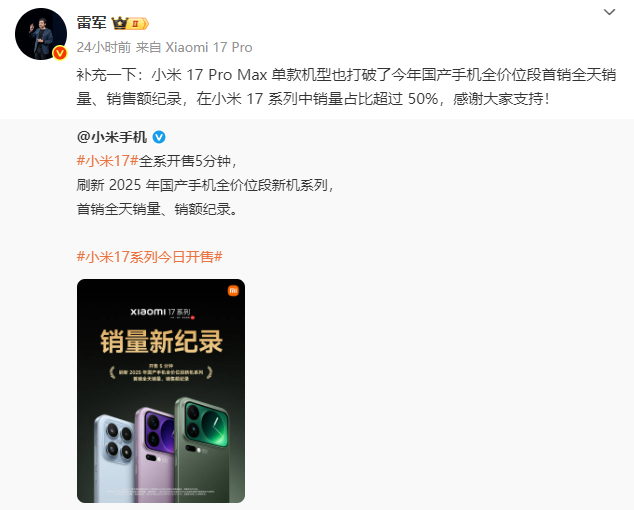
Source: Lei Jun's Weibo
When the marketing tactics deemed as "gimmicky" by many are supported by real sales data, Xiaomi's "comprehensive superiority" battle in the 17 series has achieved a phased victory. Those who once doubted Xiaomi's ability to establish itself in the high-end market must now re-examine the strength and determination of this Chinese tech brand.
In the past, Xiaomi may have been more commonly seen as a representative of cost-effectiveness. Today, it is reshaping external perceptions of its brand with a high-end and innovative image. This transformation is not only a significant boost to Xiaomi's brand value but also holds profound implications for other domestic smartphone brands. It proves that through continuous investment in technological R&D, precise market positioning, and bold brand strategy adjustments, Chinese smartphone companies are fully capable of securing a place in the global high-end smartphone market and competing head-on with international giants like Apple.
Before ushering in the prologue to the comprehensive rise of Chinese tech brands, presenting themselves with true confidence and pride may be the inner transformation that "Xiaomis" must undergo.

